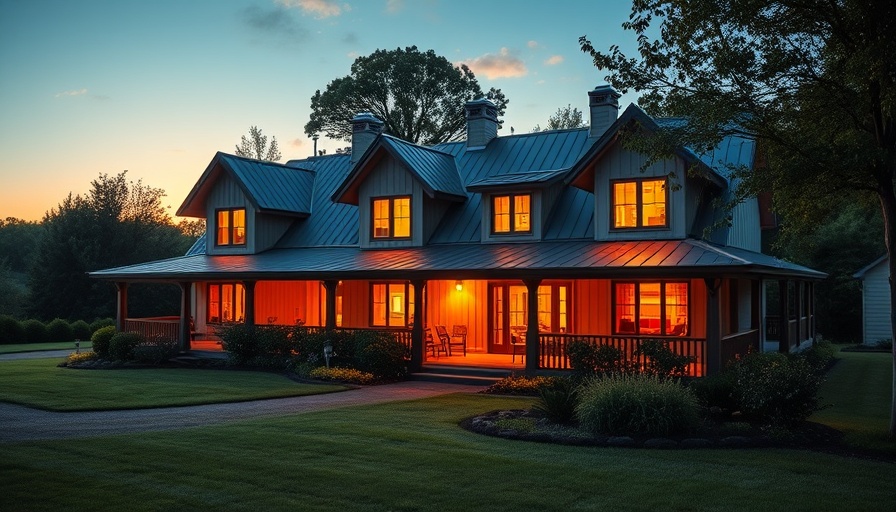
Understanding Exurbs and Suburbs: A New Perspective
As homebuyers reassess their desires and needs in the evolving real estate market, the contrasts between exurbs and suburbs have gained significant attention. The traditional suburban lifestyle has long been synonymous with peaceful landscapes, community accessibility, and the American ideal of homeownership. However, with changing paradigms like remote work and urban cost pressures, many are finding themselves drawn towards the allure of exurbs.
What Defines Exurbs?
Exurbs refer to the broader expanses beyond suburbs, marked by a distinct rural atmosphere characterized by larger land parcels and a more open, spacious feel. This setting attracts individuals and families looking for serenity away from densely populated urban areas. The appeal lies not only in the nature surrounding them but also in the potential for affordability—often presenting lower home prices than those found closer to urban centers.
The Suburban Lifestyle: Benefits and Drawbacks
Suburbs offer a structured living environment with a range of amenities—from shopping centers and restaurants to parks and healthcare facilities. However, this convenience often comes at a cost, as housing prices in suburbs tend to be higher than their exurban counterparts. Moreover, the close-knit community feel can be appealing, allowing families to build social networks. Yet, with increasing population densities, the vibrant charm sometimes fades into traffic and noise, leading many to reconsider their residential choices.
Pros and Cons: Exurbs vs. Suburbs
Choosing between exurbs and suburbs can influence lifestyle considerably. Below are several pros and cons to think about:
- Pros of Living in Exurbs: A quieter lifestyle, lower home prices, larger property sizes for gardening or outdoor activities, and a strong sense of privacy.
- Cons of Living in Exurbs: Longer commute times, fewer amenities, and limited access to public transport can transform convenience into a challenge.
- Pros of Living in Suburbs: Easy access to essential services, a well-established community infrastructure, and greater opportunities for social engagement.
- Cons of Living in Suburbs: Higher housing costs, potential overcrowding, and more stress from commuting.
Factors Influencing Your Decision
When considering whether the exurban or suburban lifestyle suits you best, reflect on factors such as your professional obligations, family dynamics, and personal preferences. Understanding your priorities is crucial—do you value a vibrant community with immediate access to amenities, or are you seeking tranquility, space, and a more natural backdrop?
The Future of Living: Trends and Insights
The ongoing pandemic has shifted trends towards remote work, propelling exurbs into the spotlight. As employees find themselves untethered from urban offices, many are opting for the larger homes and open spaces available in exurban areas, prioritizing quality of living over proximity to work. This shift not only reshapes individual lifestyle choices but also has potential ramifications on housing demand and pricing trends across both suburbs and exurbs.
Final Thoughts on Your Real Estate Journey
Ultimately, whether you lean towards suburban life or are drawn to the exurbs, understanding the implications of your choice is key. As a potential homebuyer, it's wise to engage with real estate experts, explore listings on platforms like Redfin, Zillow, and Trulia, and assess your financial capabilities in terms of homes for sale and rental options. As the real estate market continues to evolve, stay informed to make decisions aligned with your aspirations.
Take Action Towards Your New Home
Considering both exurbs and suburbs offers a fascinating lens through which to evaluate your future. Explore homes for sale and rental properties that align with your lifestyle goals today, and embrace the journey of finding your perfect fit.
 Add Row
Add Row  Add
Add 



Write A Comment